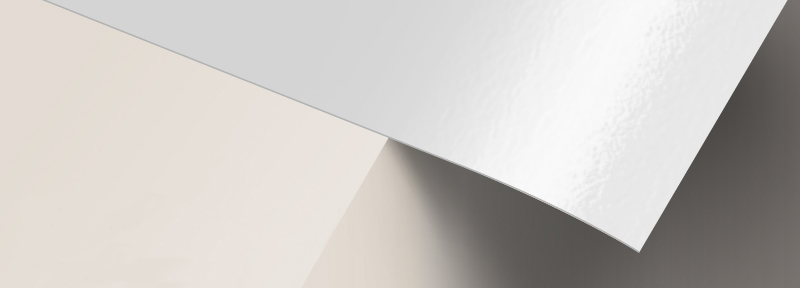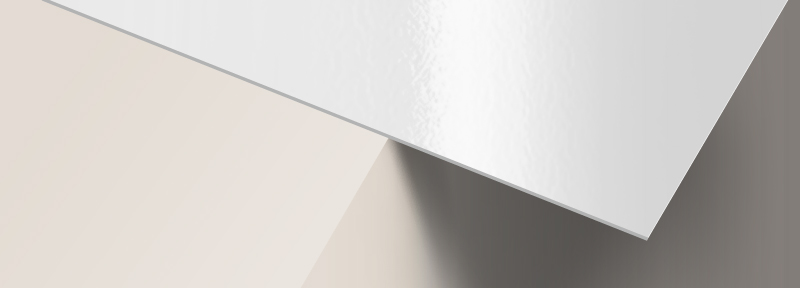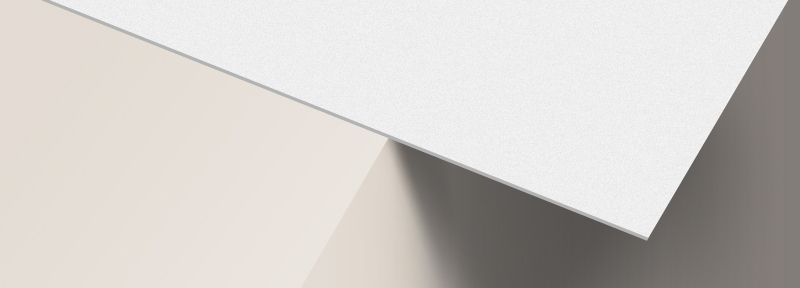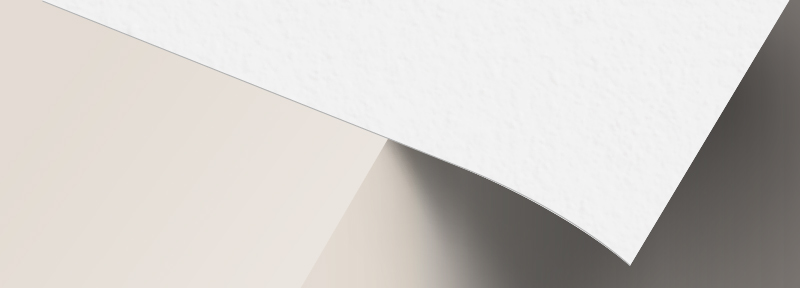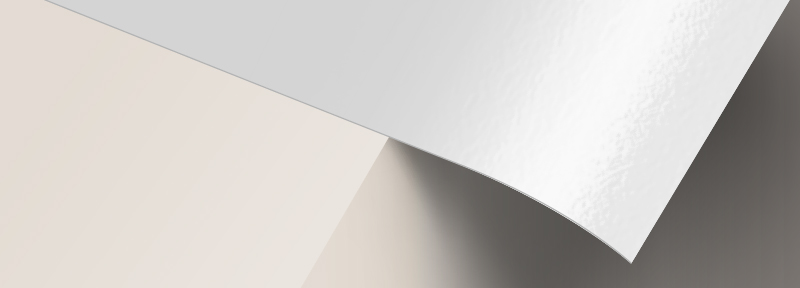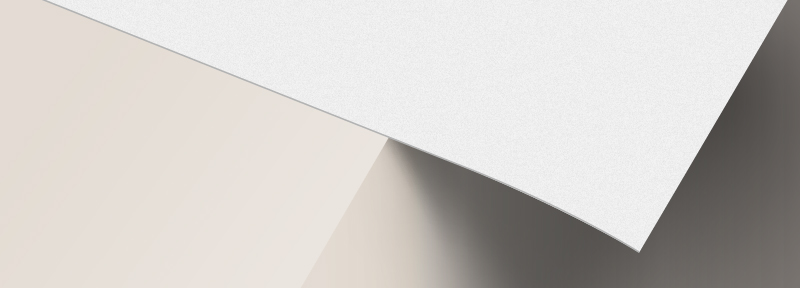Brochures
Maximize High-Quality, Organized Brochure Printing
Brochure printing is part of every successful marketing campaign. Give away brochures at conventions, highlight details about your new collection, or include them with every new customer purchase. They are an effective, versatile, and affordable promotional tool.
It would help if you had a fold that complements your brand and brochure design. Please choose from our nine available brochure folding formats.
2-Panel Folds
Bi-fold
As its name indicates, this brochure contains two panels with enough space for lengthy text or large images.
3-Panel Folds
Three-panel folds work best for most brochures. Choose from the following three-panel folding options: the trifold or letter fold, the z-fold, and the gatefold. They have just enough space for all the important information about your product or business.
Trifold
The trifold is folded twice to create three panels for a short, visual, and informative brochure. It is the most popular folding option.
Z-Fold
This commonly used brochure has six printed panels on both sides
Gate Fold
The gatefold has two cover panels that open up to reveal a larger third panel.
4-Panel Folds
Four-panel folds are great for brochures that need to contain more information while still keeping them perfectly organized.
Accordion Fold
This brochure fold forms a zigzag pattern.
Double Gate Fold
This fold is similar to the gate fold, with an extra fold in the center. It is also known as a closed gatefold
Double Parallel Fold
This fold is folded equally in half then folded again in the same direction.
French Fold
The French fold is folded in half horizontally and then vertically folded in half to create the four equally sized panels.
Roll Fold
Roll fold is folded three times from right to left. Each panel is directed to fold toward the left
We print brochures for you on three premium paper coating options. Glossy paper is vibrant, while the matte’s smooth surface is elegantly subdued. All brochures are printed on paper stock and 10 pt. cardstock is folded before printing.
You can upload a ready-made design or create your brochure with our design tool. Make a new design today and have the order shipped anywhere in the Qatar. Start brochure printing for your marketing needs today.
Brochure Printing FAQs
All sizes shown on the calculator measure the brochure when unfolded and laid out flat on a surface. If you want a finished trifold brochure that folds to 8.5” x 3.69”, the unfolded size should be 8.5” x 11”.
1. Cover – A central image that immediately conveys what your product or service has to offer. Include your company logo and name so customers make the association.
2. High-Resolution Images – Use 300 dpi images for your brochure design. This resolution ensures the photo won’t be blurry upon printing.
3. Features and Benefits – The copy should elaborate on your product’s or service’s main selling points. Break it down in a list format or several sections for easy reading.
4. Call to Action – Include discount coupons or promos in the brochure to drive traffic to your store or e-commerce site.
5. Contact Information – Don’t forget to place all your company’s contact information, such as a telephone number, address, email address, and website for the customer’s preference.
The most eye-catching brochures are highly visual and use images to guide the reader through the content. A photo or illustration in each panel helps introduce or show the content in detail. Your copy should be as short as possible to sustain the reader’s focus on your main topic. For more information, check out our guide on how to design brochures
The number before the paper and cardstock material indicates its weight. This means that 70 lb. paper is the thinnest and lightest, while 100 lb. is the thickest among the paper options. The 10 pt. cardstock is also lightweight but slightly thicker than paper stock materials.
Note: If you are mailing this product, please confirm that your mail addressing machine can print on the laminated surface. If unsure, please call to request a sample before placing your order.
Brochures are practical marketing tools used to promote your information-heavy campaigns. They can be laid out like a take-out menu containing listings of different products and services; or as travel and events guides. Brochures come in standard and custom sizes. Read on to learn how to create standard brochures that will work best for your business.
You can order a minimum of 100 brochures.
The fastest turnaround or printing time is 1 business day. You can also select 2 or 3 business days as the printing time. Your order will be ready for delivery or shipping after the selected period.
Yes, you can mail the brochures directly to recipients. After indicating the features of your brochures, check “Mailing Services” below the tabbing options. You’ll need to upload a mailing list so we know where to send your brochures.
Brochure Sizes, Folds, and Sample Designs
The information you will include determines the brochure size suited for your business. There are five standard brochure sizes — which you can combine with five popular types of paper folds. It helps to create an outline of your content to have an idea of the size that best works with your material.
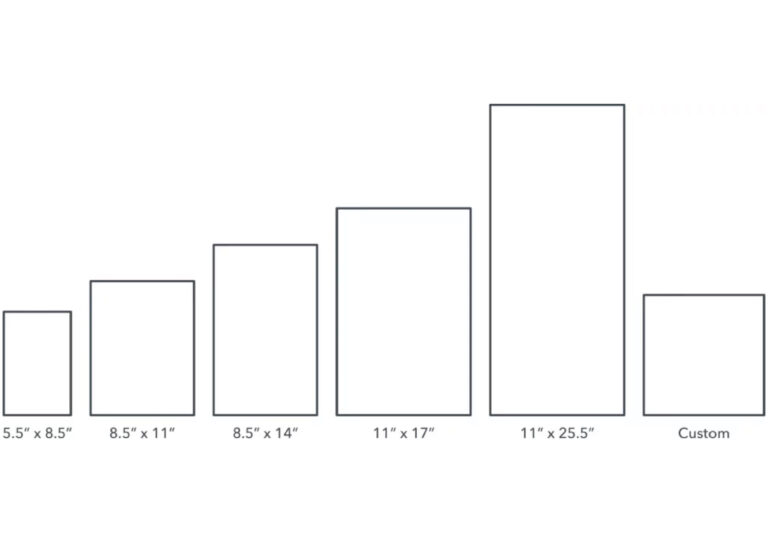
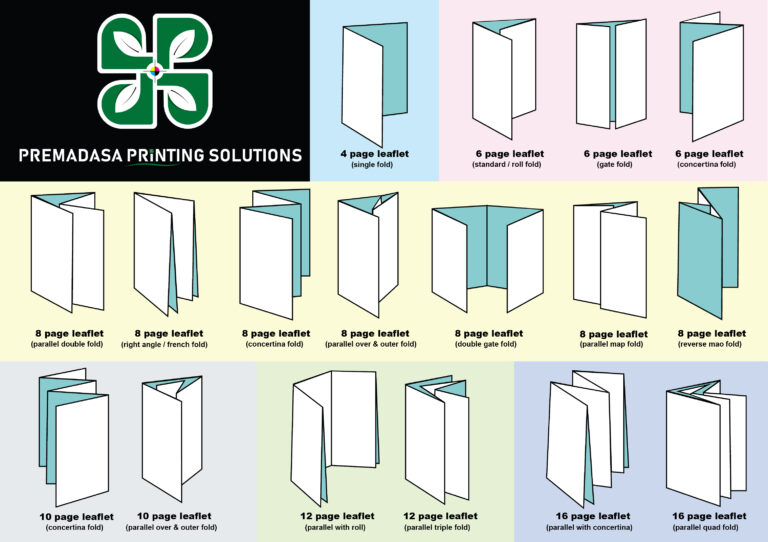
Brochure Size for every business
Standard brochure sizes from 5.5″ x 8.5″ to 8.5″ x 14″ are used by businesses that wish to spread information about their products and services. Below are examples of industries and/or events where we can use these sizes:
- Services – A good example of this would be photography studios. These brochures can feature sample works, special packages, and contact numbers.
- Medical – informative guides that summarize health care facts, medical conditions, health concerns, and general first aid topics.
- Real Estate – Description of commercial and residential properties and property information such as the address, property specifications, and contact numbers
- Trade Fair – participating companies in these events have an opportunity to communicate with their audience through brochures. They can showcase and demonstrate their products and services and position their brand among competitors.
- Non-Profit Orgs – these organizations use brochures to explain advocacy, history, and mission to gain support from potential benefactors and the general public.
On the other hand, the larger brochure sizes, 11” x 17 and 11” x 25.375, are more appropriate if you want to have more detailed content because some businesses would require image-heavy content.
- Amusement/Theme Park Brochures – a definite need for theme parks to have because this informs people of featured attractions, rides, and other events.
- Mini maps – map representations are especially helpful for tourists to guide them throughout their trip. Ideally, mini-map brochures contain street names and popular landmarks. These are displayed on hotel counters and souvenir shops. A more detailed map may need custom sizing and options.
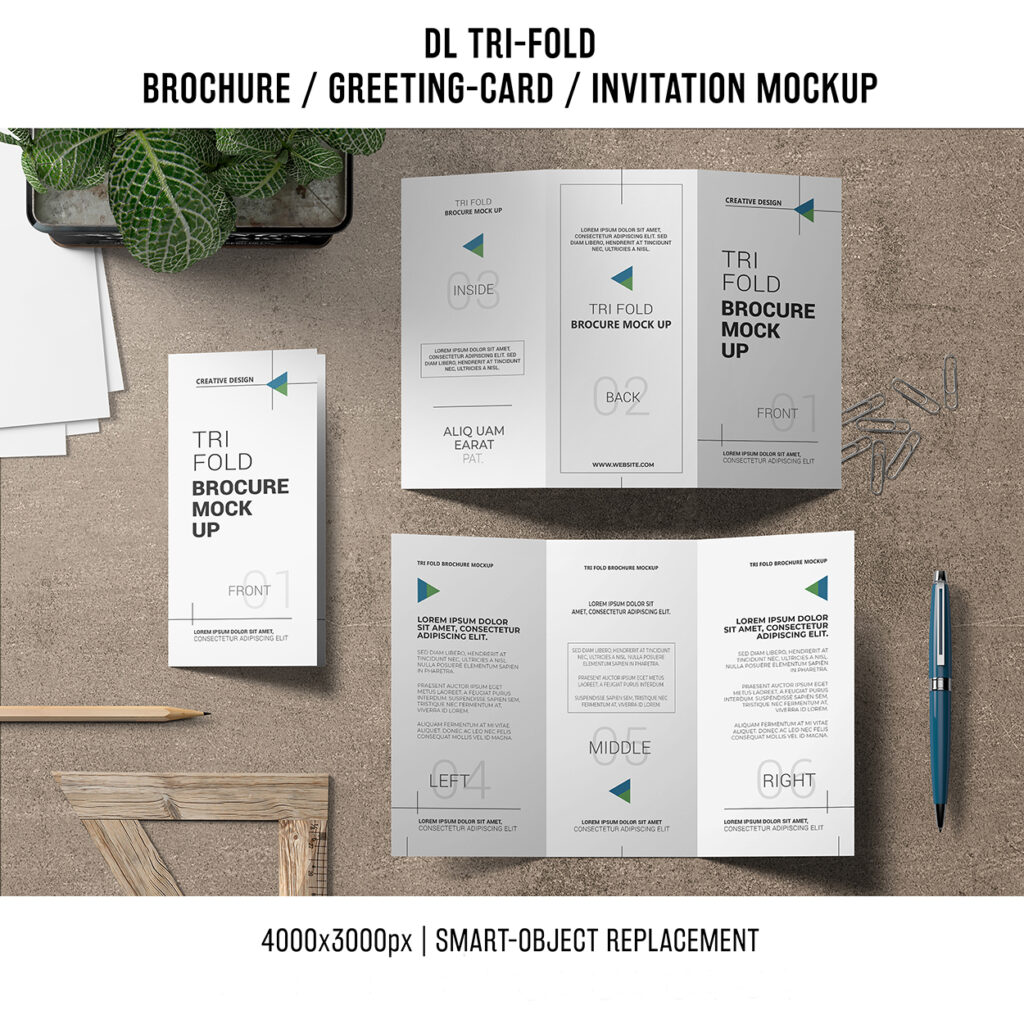
Tips on Text Layout
One challenge in designing brochures is creating the layout without crowding the copy and images. You should maximize space and position the design elements for a visually appealing design:
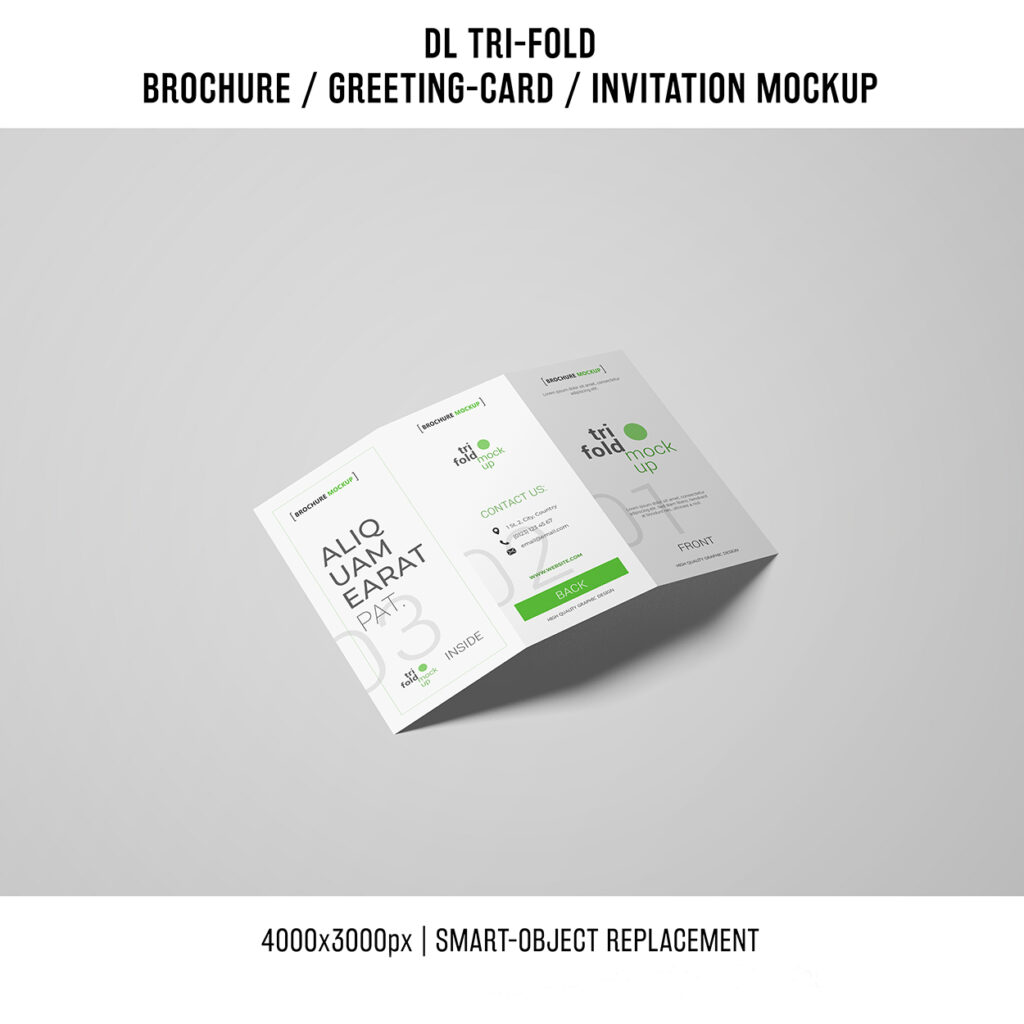
It helps to ask an opinion from a friend on your font legibility and overall design before printing it.
If you need sizes other than the standard options, Premadasa Printing Solution offers custom brochures up to 11” x 17” for digitally printed runs and 27” x 39” for offset jobs. All you have to do is to fit in your content, images included, and we will make sure your design is print-ready with our free proofing service. For more information on brochure printing, call us at +974 70283355 or chat with our friendly representatives. Our lines are open 12 hours from Saturday to Thursday and from 8:30 am to 8:30 pm on weekends and holidays.
Fonts
- Choose easy-to-read fonts (i.e., Garamond, Helvetica, Times New Roman, or Century).
- Use a sans serif font, such as Arial, for captions or small type.
- Limit your font choices. Using more than two types of fonts will make your brochure messy, unprofessional, or playful.
- Use highlighting techniques – bold, italic and bigger font size — instead of varying font styles.
- Use a bigger text size for headlines and calls to action. Although not always, font size can be relevant to the importance of information.
- Choose font sizes that are proportionate to the size of your brochures. To help you decide on the font size, assess how many words you want to fill the space with.
- Use 12-point font for the body, 10-point font for captions, and 14- to 22-point font for headlines. These are recommended sizes, but your choices will depend on the overall look of your design.
Text Alignment
- Avoid putting borders on your paragraphs unless needed.
- Break long paragraphs into bullet points. Walls of text can discourage people from reading further, and bulleted information is easier to recall.
- Use proper typographic alignment (flush left, right, justified, and centered) for a neat layout.
- Align design elements — headers, images, and text —properly.
- Make spacing consistent throughout your design. Remember to leave white space on your layout to give your content a balanced look. This helps make your design easier to read.
Size. Color. Material. It’s all here, and more.
6 Paper/Stock Options
